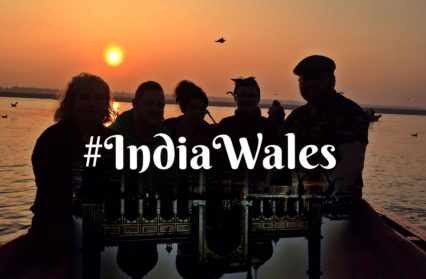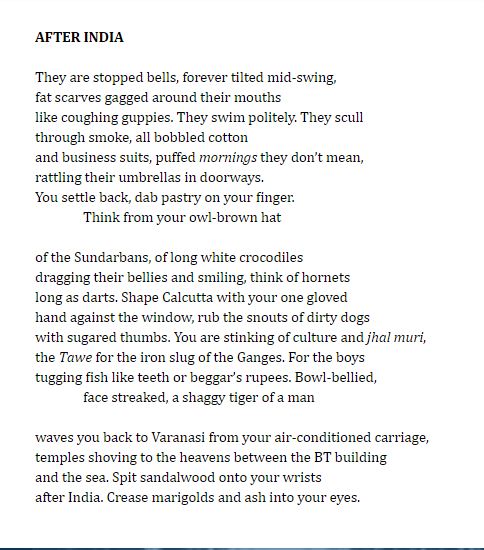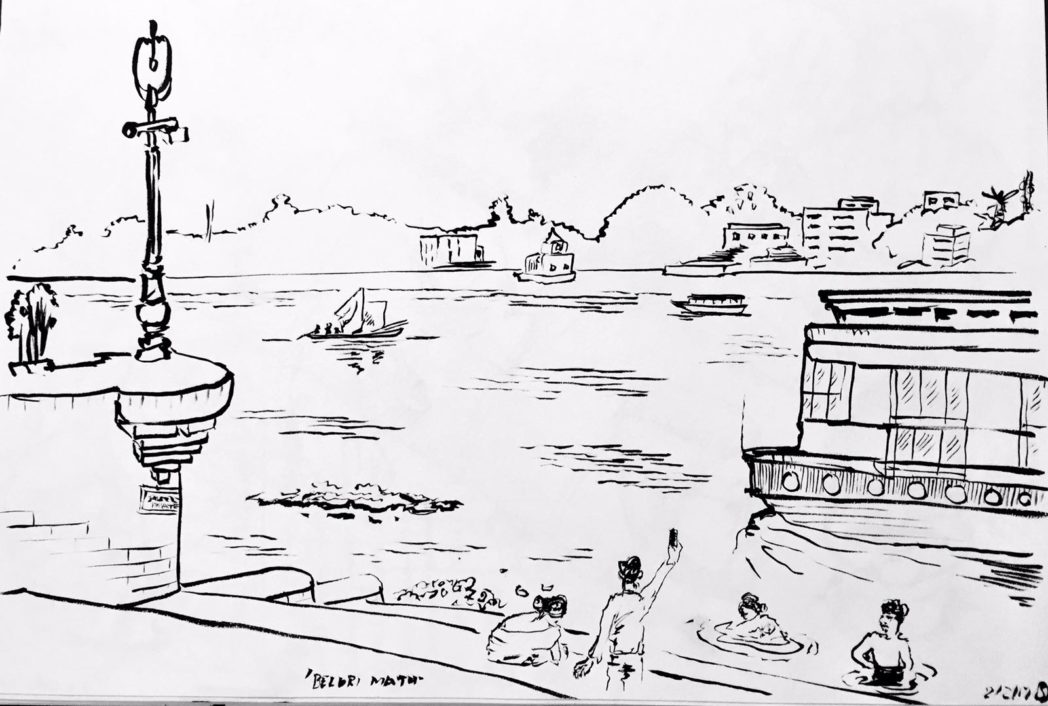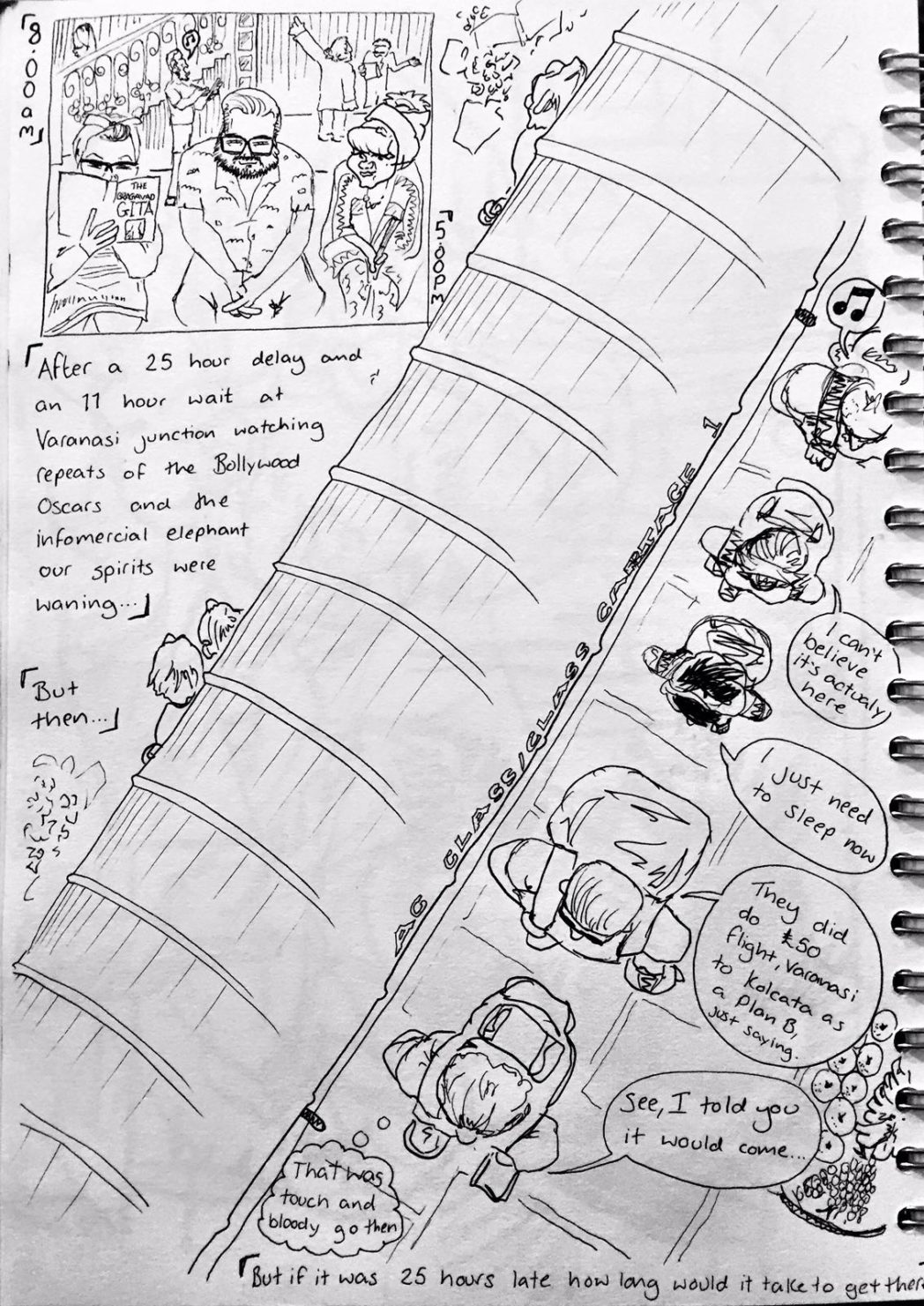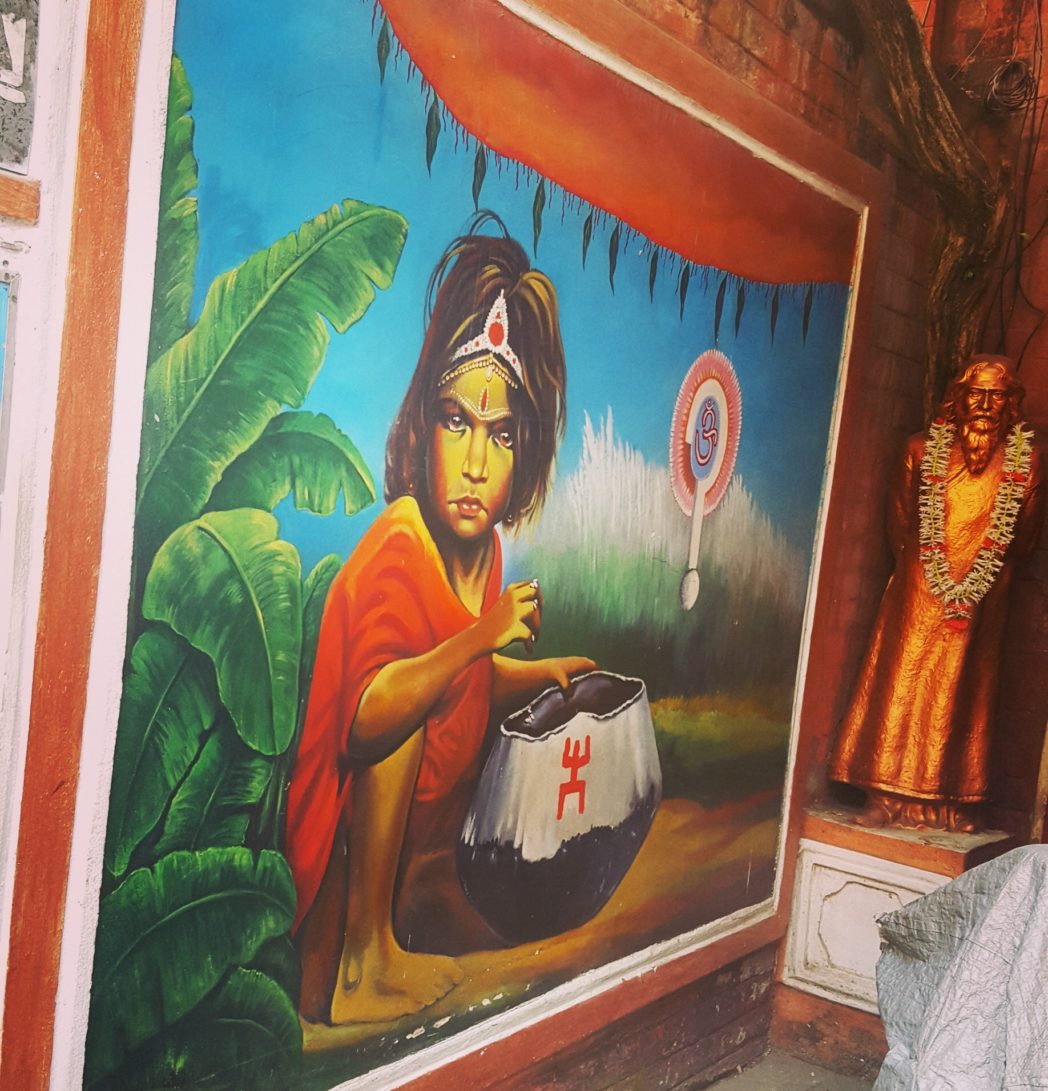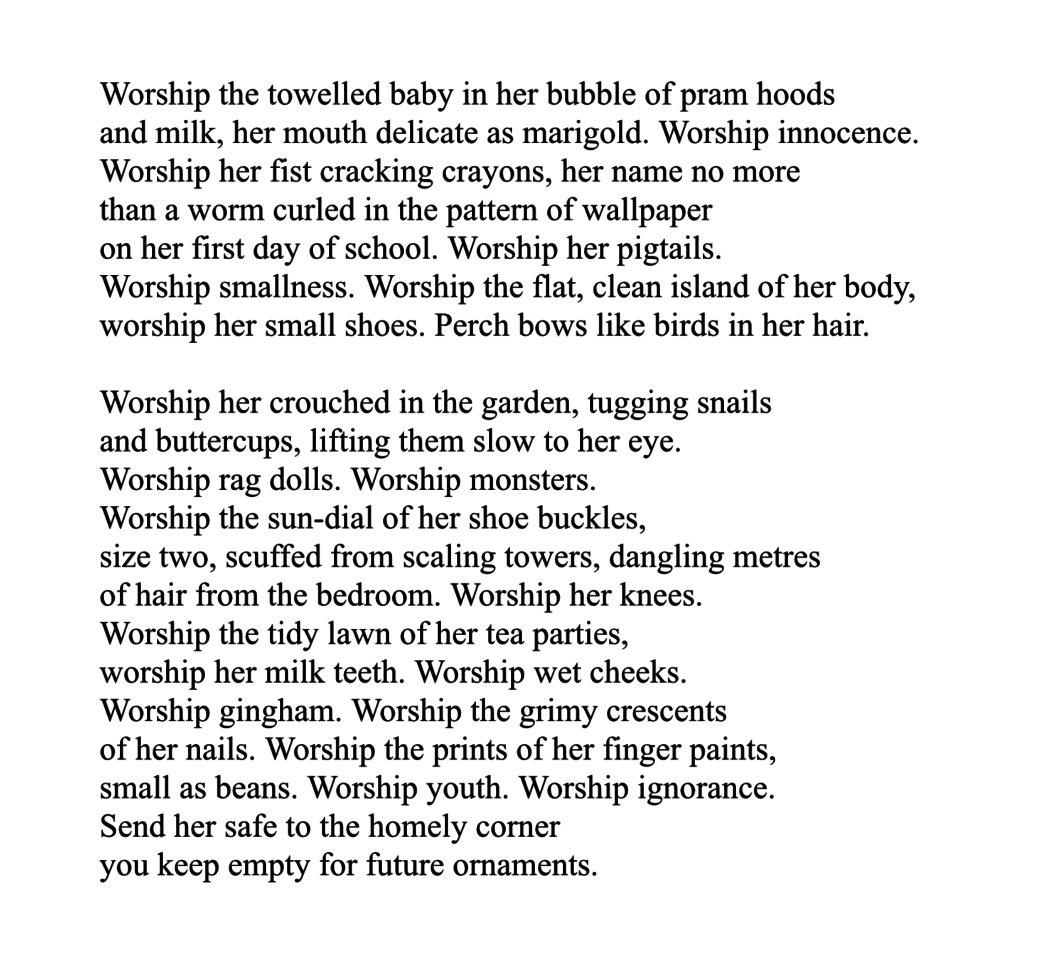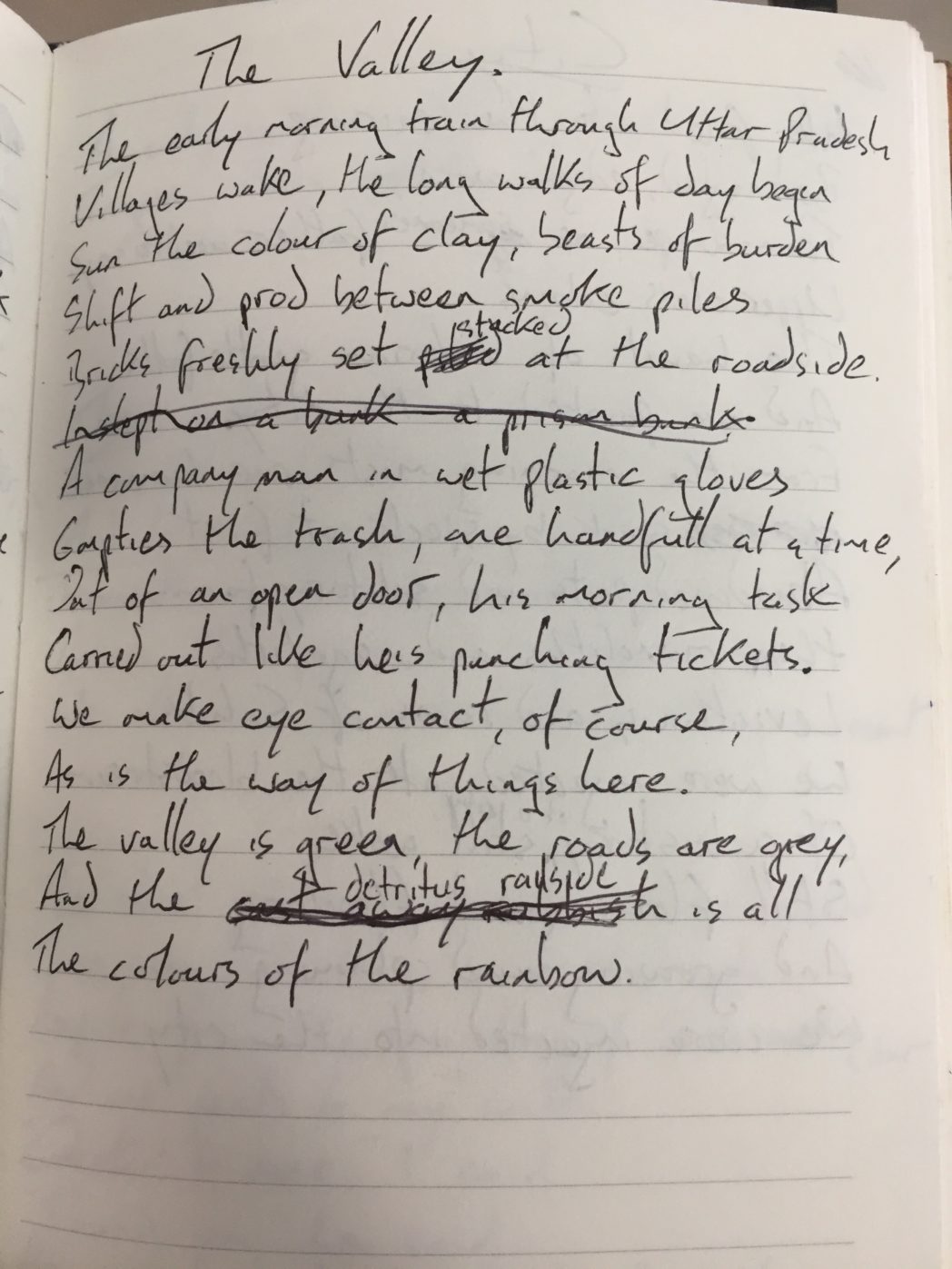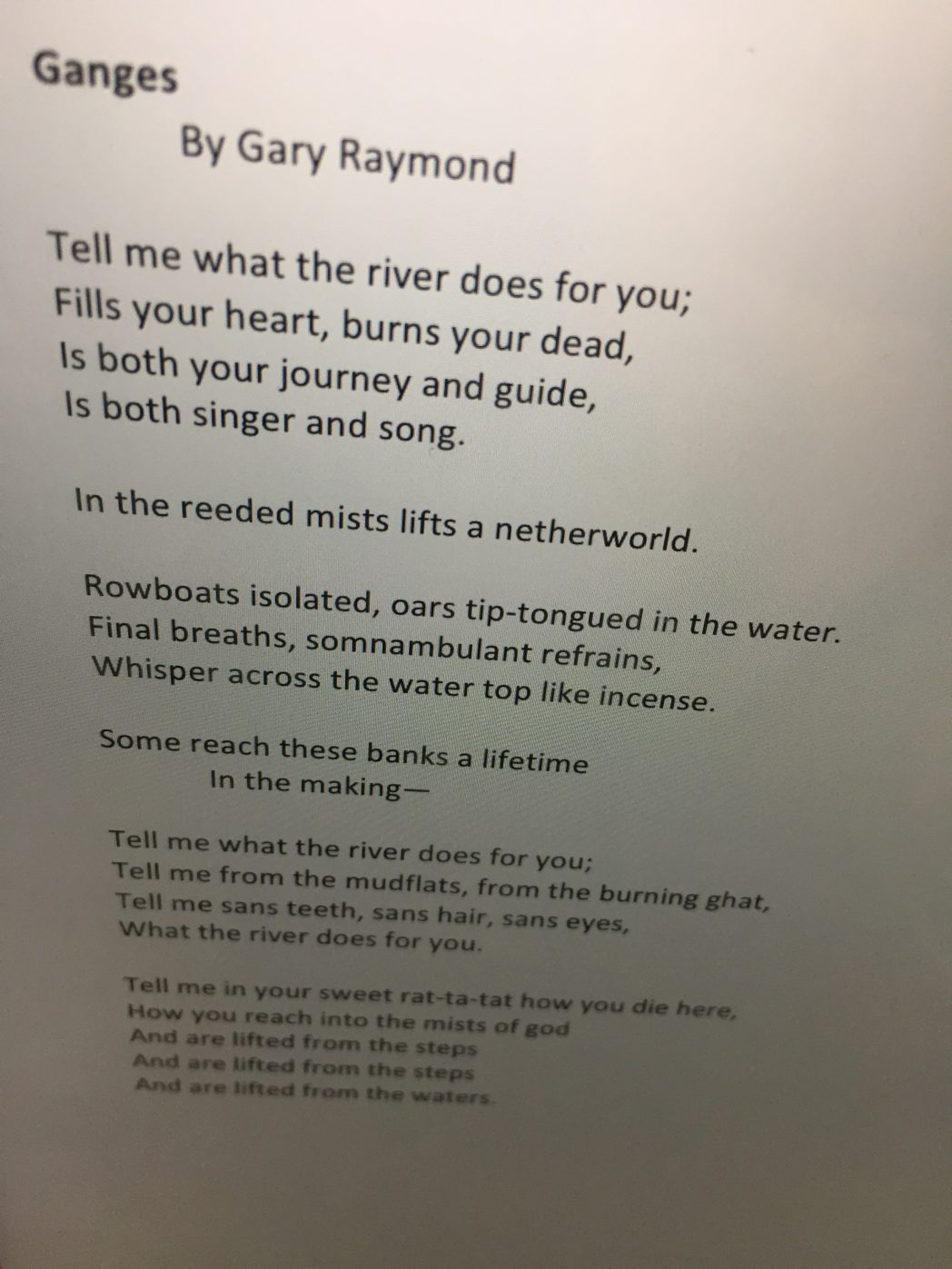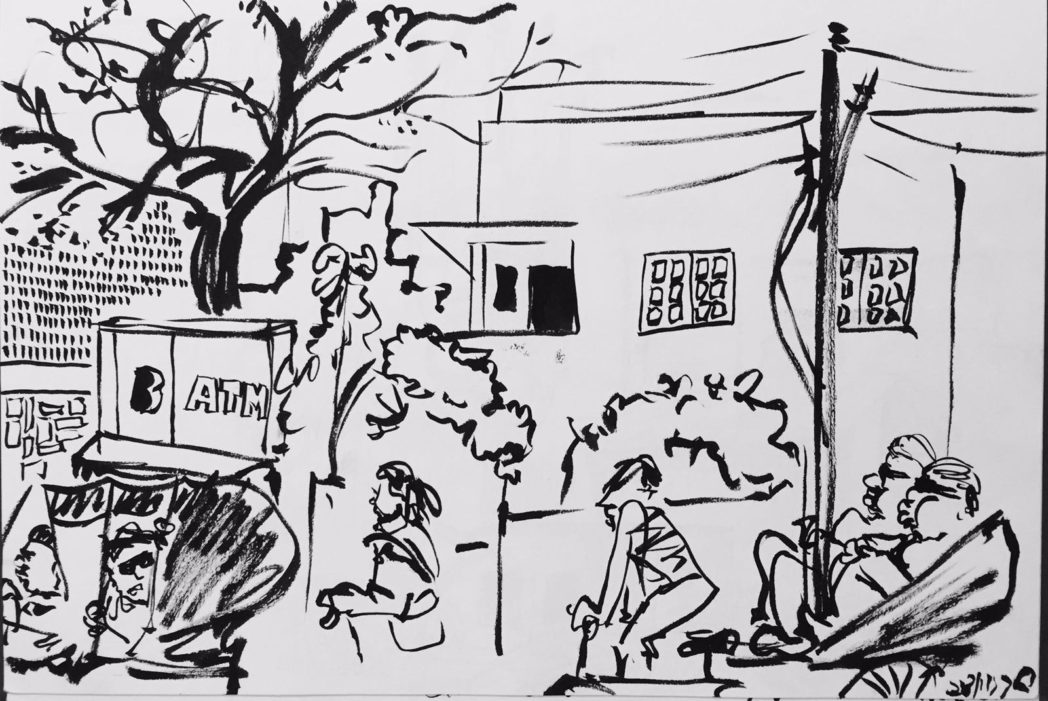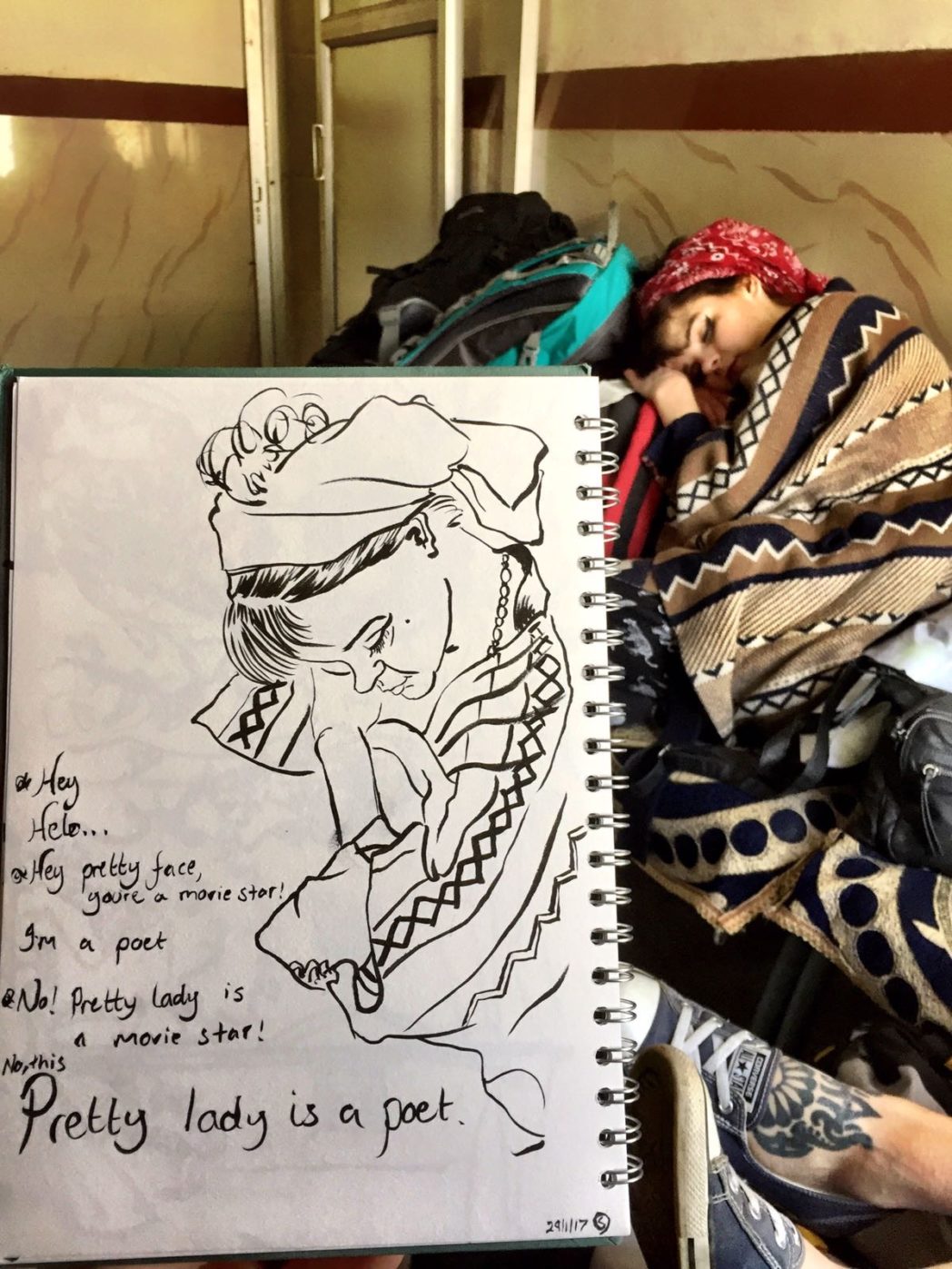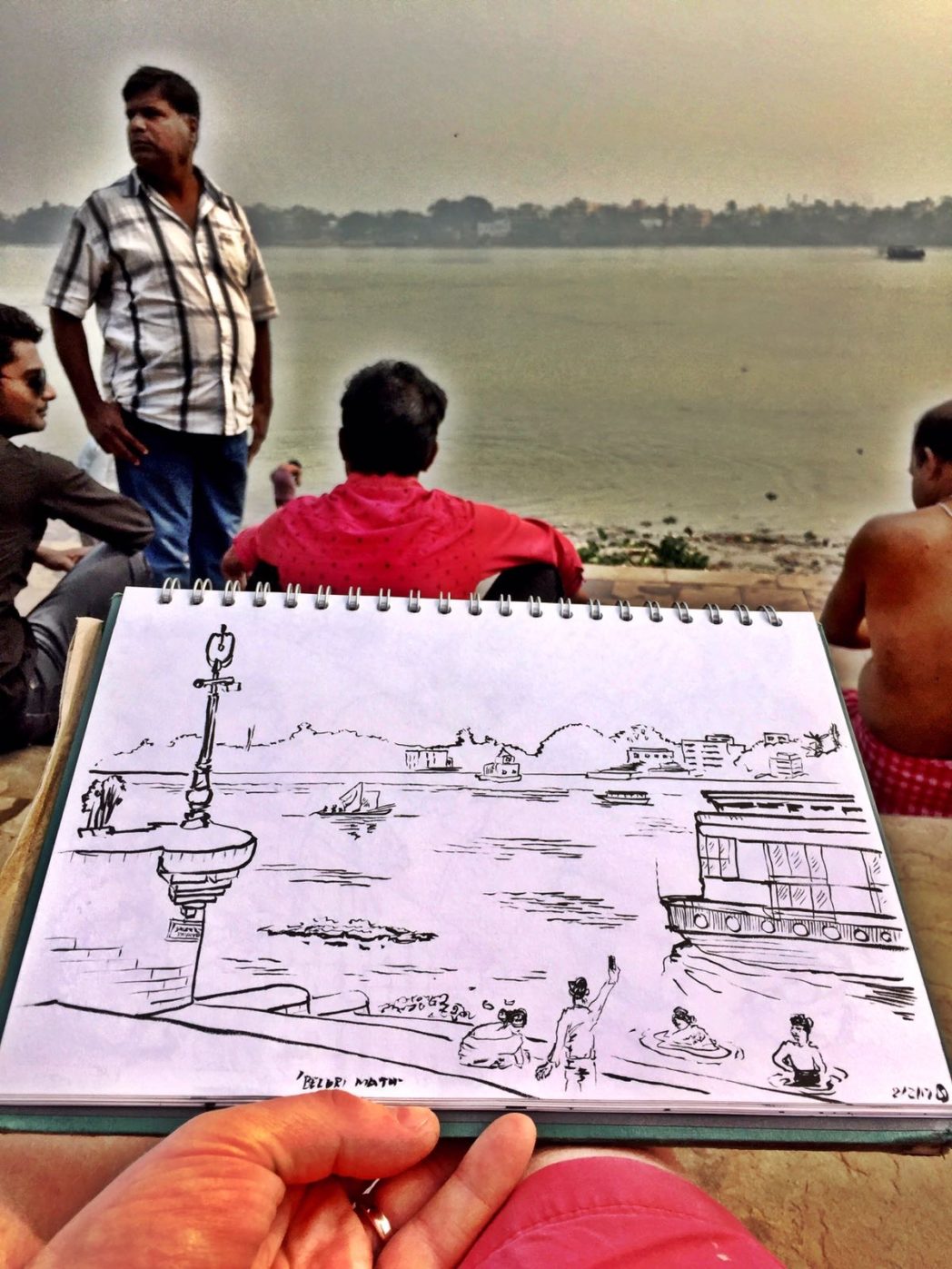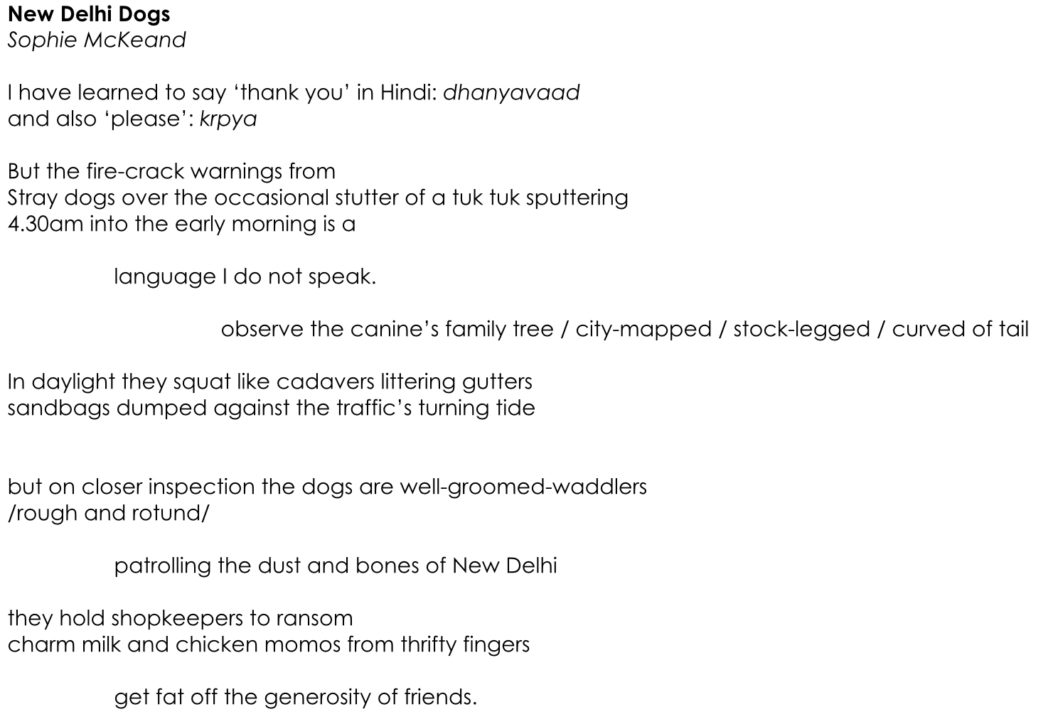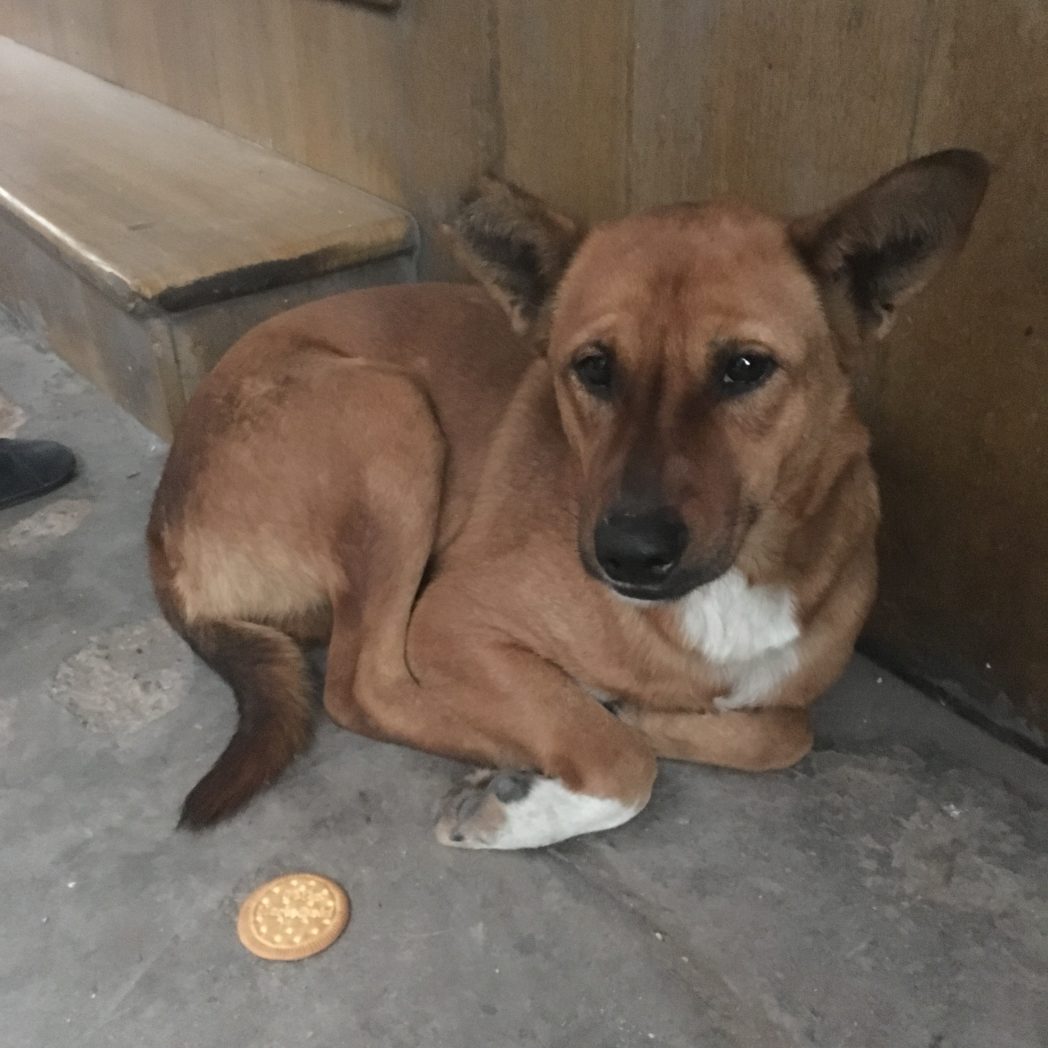Welcome to Wales Arts Review’s #IndiaWales creativity blog, tracking the creative process of four Welsh writers as they travel through India for a special cross-cultural project. Here, grouped thematically into responses to aspects of the valley, the city, and the village, we chart the writers’ progress. (Scroll to the bottom for more information on this project).
***
“After India” by Natalie Ann Holborow
City
New Delhi blog spot by Síon Tomos Owen
We check into the Ajanta Hotel, in the centre of the hotel district, about a mile from the main bazar and a stones throw from the enournous New Delhi Central Train Station. After the porter carries my bags to the room I awkwardy explain that I have no small bills to tip him with but will find him after I break one of the 2000 rupee notes (around £24) I exchanged at the airport. Something had happened politically and we were told we’re allowed to exchange £60 a week as tourists, which doesn’t sound like it would last very long, but when a cup of tea is 15 rupees or 20p then it can stretch. In November Prime Minister Modi had taken the old 1000 rupee notes out of circulation and now in January many were reluctant about the new large pink notes accept the larger stores.
We step out onto the streets that we had only seen from the taxi ride. We begn to make the cliched “crazy traffic” remark but our conversation was drowned out by honking tuk tuks screaming past us. We began to walk through the warm but unexpected light drizzle, I was glad I stuck to mam’s rule of “Always take a raincoat with you no matter where you go”. We were following out Welsh guide, who seemed to know where he was going and was searching for somewhere from his past in New Delhi, a rooftop memory of chai and bungra. Following our nomadic wanderer through the streets was a genuine introduction to India, the sensory onslaught of the bazars themselves was something else entirely. He must have a unique GPS on his experiences to be able to differentiate one main street from another, let alone the lanes and gwlis which were packed with people selling anything and everything including needles and haystacks.
Fruit intricately stacked in vibrant symetry, like apps on an iPhone screen, chewing baccy and mouth freshner mixes hung in streams like a broken condom dispenser, randomly laid out out tools on a newspaper before two crosslegged men, a row of clay bowls and a larger bowl of milky substance, and every ten yards, a vendor cart with a roasting pot smouldering atop the huge mount of unshelled penuts. Some simply stood at their stalls but I couldn’t say what they sold. One had a row of what looked like small black thimbles, some had wrapped boxes with Hindu Gods on them, one may have been a palm reader. Near a doorway one woman displayed her henna tattooed arms and beckoned us towards her, I was called to look at every pashmina display we passed. I must have looked cold, sweating in my T-shirt, shorts and green mac while they stood in ther puffa jackets and scarves at the tail end of their warm Winter.
I resist the urge to photograph every unique thing because everything is too interesting to spend too much time exploring for fear of being left behind, I turn to check we’re all still together as a group, and the looks on the other’s faces are the same, attempting to soak up as much as we can write about. The smells range from wonderful foods cutting through the stench of amonia from the open toilets, wafts of tobacco, pot and pockets of roasted nut, the odd cow pat, insence and petrol fumes from the passing motobikes. But all this comes in waves. In my valley back in Wales I used to choose my running routes based on smells, some streets made great roast dinners, others had chips shops, gardens with lillies, geraniums, lanes with tarring equipment, carpenters workshops wafting sawdust and pine, but that was over a few miles. This was all in the space of a few feet.
The sounds are costant. Relentless honking and beeping horns of the tuk tuks, taxis, motorbikes, cars and trucks. Then there’s the bells of the pushbikes and the yelps of those unlucky enough not to have a bell. The stall owners don’t heckle as much in these small spaces, they seem to be content that custom will come, they just need to be patient. They are invigilators of life in their tiny pockets of brick and cloth tucked away in little lanes of the sprawling capital city in a country of over one Billion people.
At every turn we follow what look like looping hanging vines which are actually electric cables with intricate knots and overloaded conection posts. They look like the start of giant friendship bracelets abandoned when they got too hard. They interlace with the trees that stand as if they’ve always been there. Buildings are built around them, they grow through walls and accross bridges, spanning Mughal, British and Indian Rule.
Our guide’s determined nostalgic SatNavto finally slides us down a tiny walkway flanked by a bookstall selling classic English spy novels and get to a tiny doorway leading up to some stairs. A dog looks up at us but unlike the constant stares we get from locals because of our pale skin and “foreign” appearance, it returns to it’s nap. On the wall there are signs for a mobile telecoms seller, a solicitor and an accountant as we turn to climb the stairwell. On the third floor there is a hole in the marble floor where we could look straight down to the dog sleeping on the ground floor. We step over it and climb a further three floors before walking out onto a small rooftop terrace overlooking the bazars of New Delhi with the red sun setting behind the sky scrapers in the distance.
Our guide turns to us and smiles, pleased to have found it and relieved it was still here, as if we ever doubted him…
“Five chais please”
Valley, City, Village
“And Suddenly You Find Yourself” by Natalie Ann Holborow, on location video shot and edited by Sion Tomos Owen – this is the official video of the project and highlights the launching of Natalie’s debut collection at this year’s Kolkata Literature Festival.
Valley
New Delhi-Varanasi by Síon Tomos Owen
Take an overnight flight,
Check a big bag,
Feeling jet lagged
Instagram tagged
Strike a good pose
Take the right clothes,
Choose the right queue,
Swap some cash too
Take a tuk tuk
Got my Sketch book,
Got my notebook,
Got a real book,
Got my kindle,
Backpack left back
At the hotel,
Gotto tell my wife
No wifi, yet, must get
Bottled water,
Bottled water,
Miss my daughter already…
Food is ready
What is this called?
‘This is Thali’
Vegetables, rice, breads and dahl
Is there chilly in this
Cause this is quite spicy
Can I get a chai please?
‘Ow ju say “thankiw”?
Sukorea, danewan, dondebad,
Walk a bit, then a bit, then another bit
Get lost, how much’ll this cost..?
Dur that’s cheap
Beep beep beep beep
Call a cab, taxi cab, tuk tuk, rikshaw
Motor rickshaw, riding rickshaw
Passing stalls, every types, all the
Fruit, veg, papaya,
Penuts, fruit, cow,
Penuts, veg, dog,
Penuts, fruit, cow,
Samsung high speed 4G glass fronted neon lit stall
Next to
Crisps, fruit, cow,
Crisps, veg, dog,
Three squated stone seats,
Cutthroat barbers, three in a row
A stones throw from the ghats
Monkey see, monkey hear, monkey
Do not take pictures of the burning ghats
Cobras, cows, crows
Rows and rows and rows of laundry
On steep steps, long steps, tall steps
Beep beep
Cow, bike, cow
Beep Beep Beep Beep Beep Beep Beep Beeeeeeeeeep
Mooooo
Kakaaaaw
Ganges
at surise…
Row
Shhhhhhh
Row
Shhhhhhh
Row
Shhhhquaaaaaak ooh ooh aahhh
Monkey
Cheeky monkey, closer monkey, scary monkey,
Coffee coffee chai
Coffee coffee tea
No wine
Fine
No beer
Fine
No WIFI
WHAT?!!
Our hotels’ down this ghat
This ghat or this ghat?
Not that ghat
Tht ghat’s a ghat too far
Near the cars
The silent ones parked
Away fro the bazars
Away from the bars
But near the bookshops
The abundant bookshops
Little booths, little books,
Little nooks and crannies
Little baskets for pennies
Bigger basket with snakes
Coiled around rupees
Next to one legged lute players
The bearded sitarists
The blues, the pinks, the greens, the gold
Add a layer tonight cause it gets cold
We’re told
Through our beads of sweat
It gets much hotter
We’re told,
Glad we’re here now then
To catch a tuk tuk
Read a book book
Write a bit,
Look
Listen,
Smell,
Taste,
Feel
Utterly overwhelmed
On day two.
Valley
“No daffodils in Varanasi” by Natalie Ann Holborow
We tumble out, sticky as gulab jamun
In the fug of Indian heat, shrug beneath our luggage
As though we can squirm the temperature down.
Bernaras. Cobras lift from jars in the Assi Ghat,
Roped in a small girl’s fingers where she squats
Over her scattered rice. I gasp, point out the monkey
picking dreadlocks on the charmer’s shoulder,
Crease a rupee into his palm. He meets my eye,
Namaste, and the monkey grins.
Remember, on the Ganges, how we shivered
into photographs for Mam, for Dad, to show them
that same sun that will melt their frozen driveways,
warm their valleys. There are no daffodils in Varinasi.
Marigolds cluster like barnacles against rowboats,
Where the bare-bellied boys don’t notice, stopping
To tug the fishes, easy as loose teeth. Stop, I say,
Stop in the streetlights. Smell the Indian coffee.
Valley
“Morning Prayer” by Sophie McKeand
It may look like Sophie is performing in front of green screen, but this is a recording on location just before sunrise on the banks of the Ganges in Varanasi, India.
City
Poetic lines by Natalie Anne Holborow
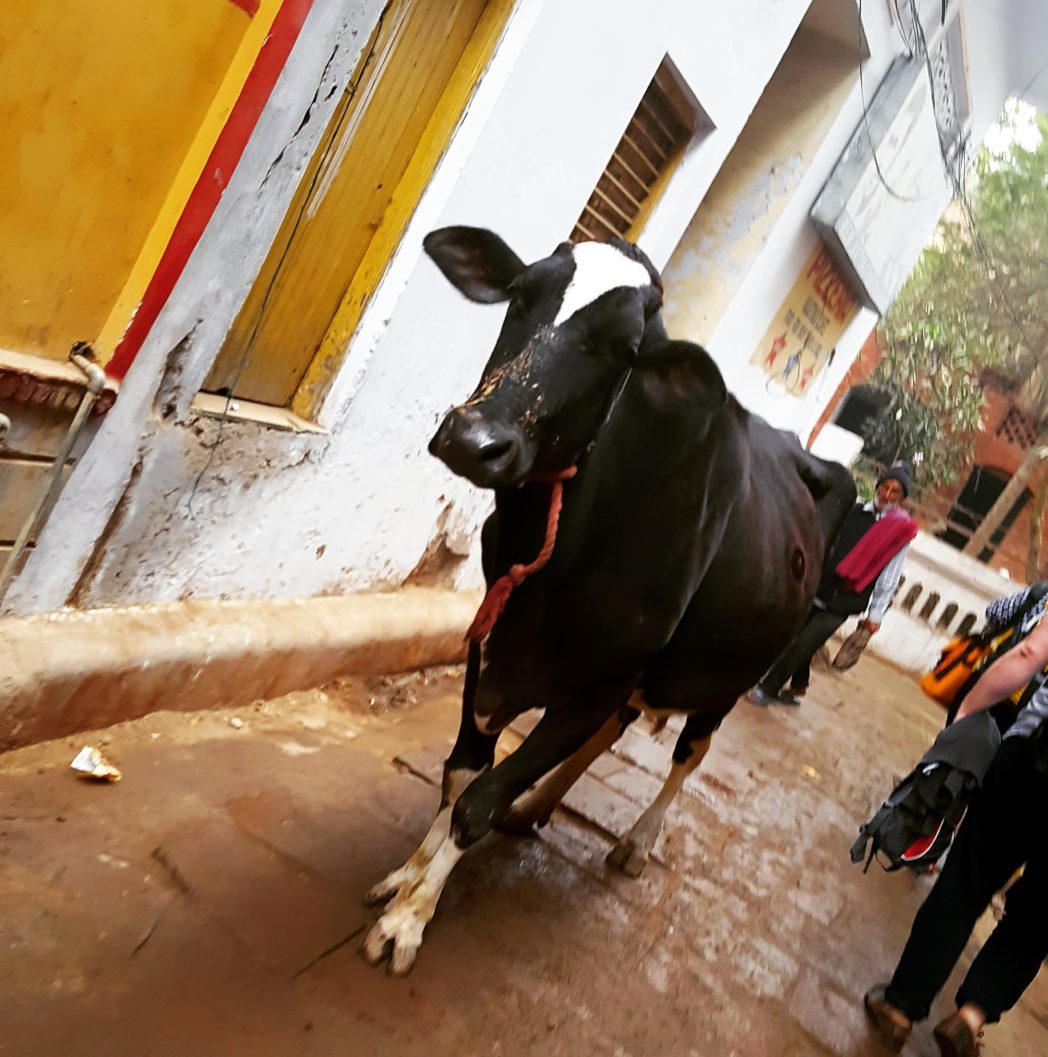
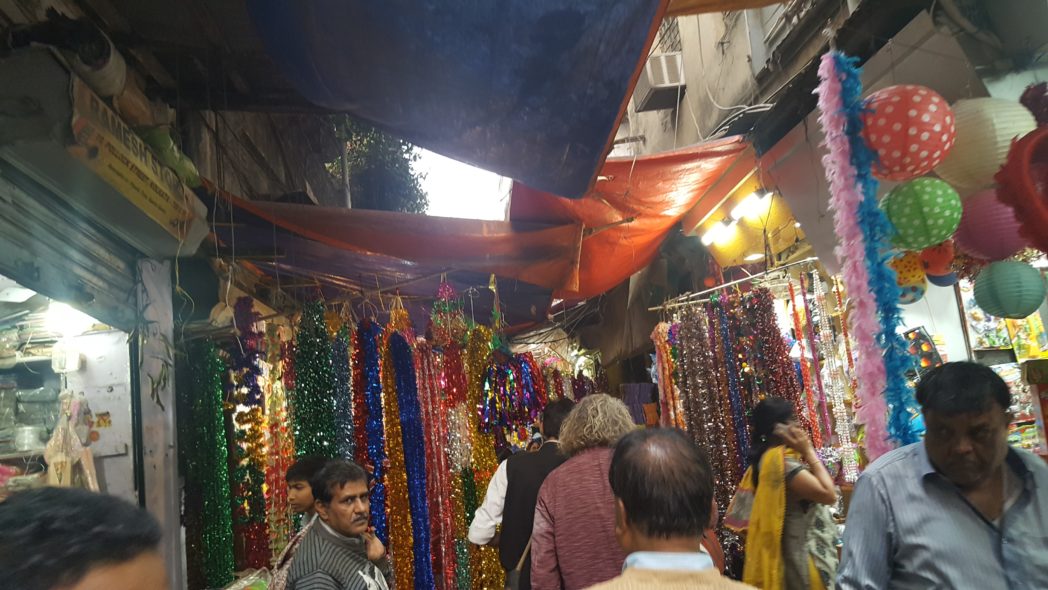
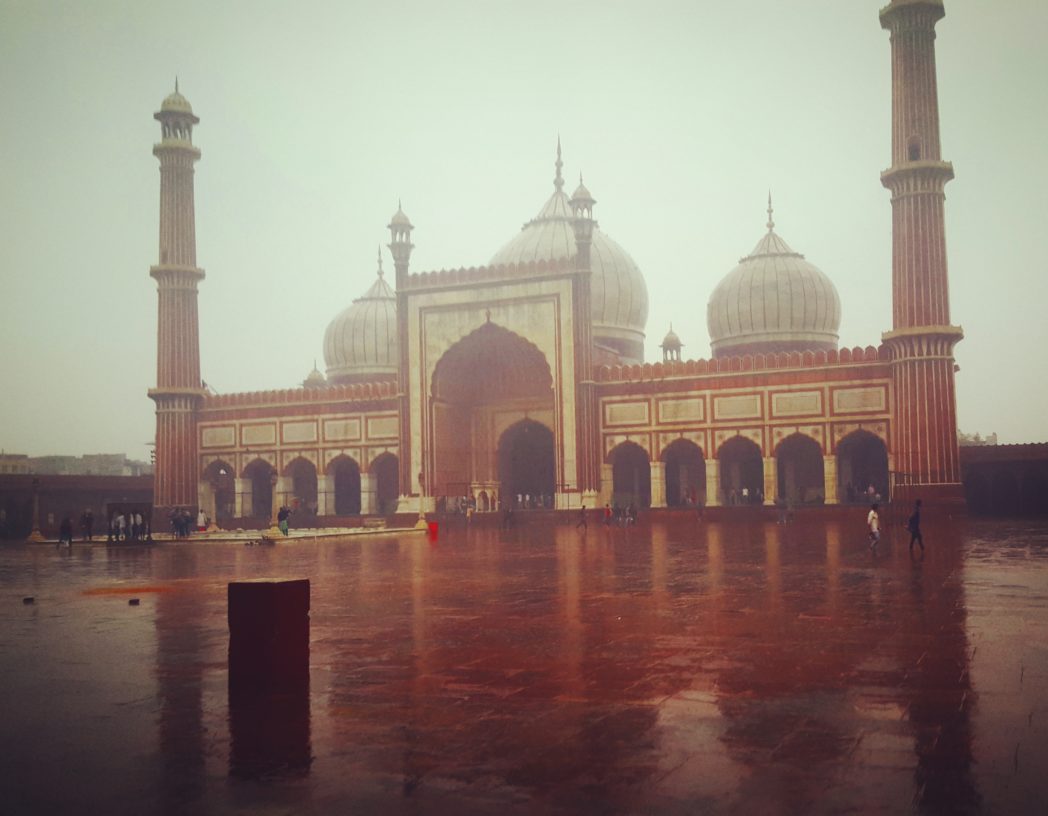
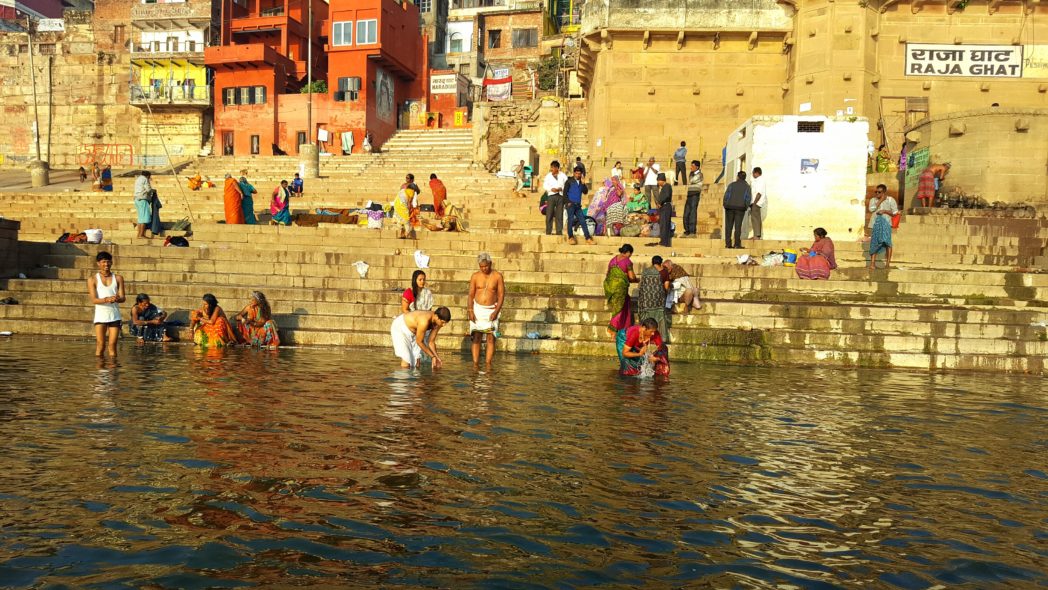
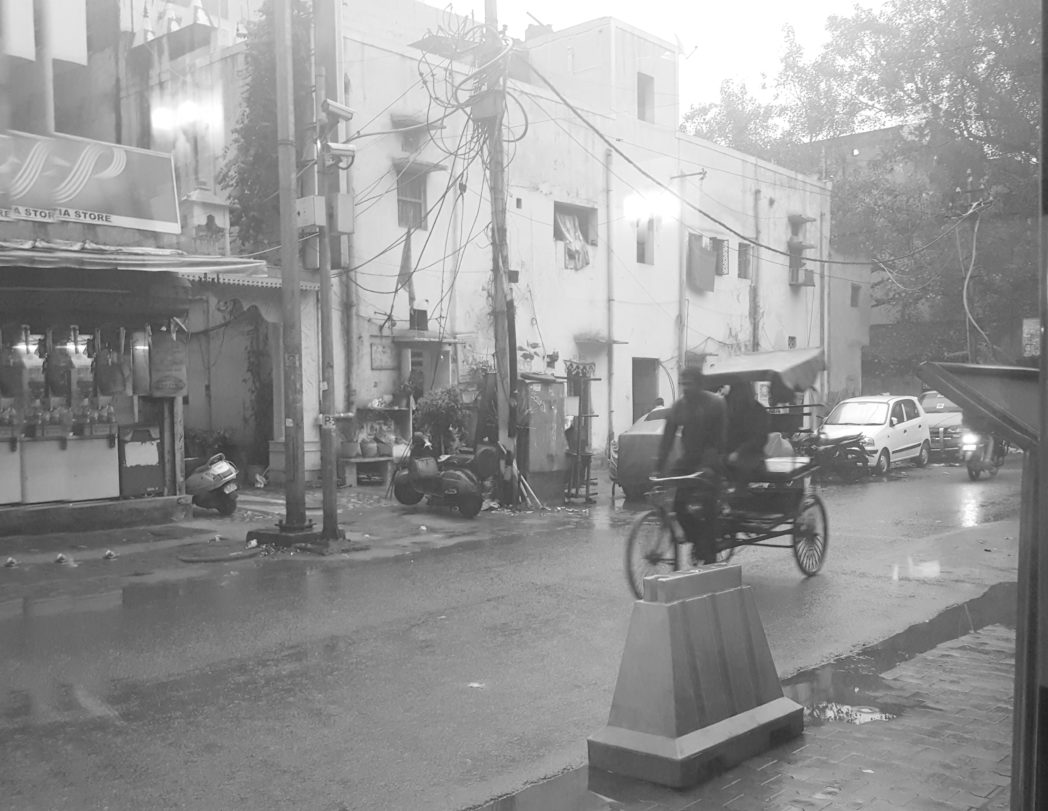
City
Daybreak at Belur Math by Síon Tomos Owen
Valley
Three poems read on the Ganges at Varanasi, India
City
“Kolkata Roads” (WIP, poem sketch) by Gary Raymond
Blood flow is easier than this
And no less evolutionary
Lava flow, traffic does not run,
It seeps. It might kill you
if it hit you, but such speed
Seems out of reach – Although I
Wouldn’t push my luck.
A jerk to the left, a jerk
To the Right
The traffic is family in mid-fight.
Pocked roads like smoker’s tongues,
Is this a symphony of horns
Or the Wheezing arteries of a city?
“Follow the traffic rules”,
You see tattooed like sailors’ warnings,
Reminders of the dangers of whaling
On these narrowest of high seas.
It may be odd to think of water
in this dryness, but the drives
are choppy oceans, stormy seas,
And Kolkata roads feel less
terra firma, more terza rima,
driving on the drum skins of the afterworld.
Valley
Síon Tomos Owen’s cartoon illustrating the infamous Varanasi 25-hour train delay.
Village
“Girl” by Natalie Ann Holborow
Valley
notebook – poetic sketches – Gary Raymond
City
Síon Tomos Owen
Valley
Síon Tomos Owen
City
City
Arrival in New Delhi (Natalie Ann Holborow)
It is 5am in New Delhi and the circus of traffic and dogs has finally lulled to sporadic honks and short barks over the click of the ceiling fan above me. I have been awake for over 40 hours. The cool air lifts my hair. I drive my skull into the pillow and tug out the earphones I’d been using to try and drown out the chaos of the city below my window and try to sleep.
The past 40 hours have been a blur of bent backs and heavy rucksacks, flight numbers flashing on LED boards, sputtering tuk tuks, oils cracking in roadside stalls and the flutter of silks from crammed alleys, an ever-moving cacophony of colour. Curries swim in steel bowls. Thin dogs scatter the pavements in little wide-eyed heaps.
It only took one white-knuckle taxi ride from Delhi International Airport to realise that this is a far cry from Uplands Market on a Saturday morning, let me tell you.
In the weeks leading up to the trip, I’d had two distinct reactions when I told people I was going to India with Parthian Books and a fellow group of Welsh writers: Richard Davies, Sion Tomos Owen, Sophie McKeand and Gary Raymond. The general responses were:
● “Oh wow! India! That’s amazing, what a fabulous opportunity. I’d love to go there.”
● “India? Oh…oh. You gonna cope?”
Admittedly, I’d always known India would be a push out of my comfort zone. I’d read horror stories on travel blogs (some of these are massively exaggerated, as I quickly found out…for example, I did not step out of New Delhi airport and fall into a massive cow poo) but Kolkata Literary Festival with fellow creatives was just too good an opportunity to miss. So I stuffed a rucksack with clothes and medicines and toiletries, said ‘ta-ra’ to my fiancé, gave an actual farewell speech to the cat and headed for New Delhi, Varanasi and Kolkata.
In my first 12 hours in Delhi, here’s what I learned so far:
● They’re big on poetry in India
● People are quick to help out
● I should have discovered paneer a long time ago
● I’m going to run out of notebook space.
The assault on the senses was overwhelming. Every step through the crowded markets, junctions and alleys brought with it a new smell of sweet pastries, delicate spices, frying onions, roaming animals or the slow fug of brown dust. People pounced on you from every direction, offering help with directions, or a rickshaw ride, or a plump orange from their market stall, lifted from coloured pyramids of sweet fruits. These people are workers, setting up for business as the sun has barely risen, and still trading as we drag ourselves exhausted to the hotel late at night.
Delhi feels too big to wrap my head around. The mix of Old and New Delhi brings with it a kaleidoscope of sights: on the one hand, you could quite easily pop into Starbucks for your daily caffeine fix (I wouldn’t recommend this; authentic Indian teas and coffees are far more satisfying than anything you get in a chain) and on the other, you could be passing a street full of stalls who have kept their business in families for generations. Everywhere you look, the flutter of traditional Indian silk mixes with 21st century jeans and t-shirts.
I switch off my light for five minutes and listen to the city, tuk tuks stuttering back to life after an hour’s repose, rickshaws clicking through the dirt. Rain spits at the windows. For that one settled hour, all I’d need was drunken Welsh bellow from the streets, and I could almost be home.
More on the Valley City Village project:
In 2016 a delegation of Welsh writers, publishers, artists and producers travelled to India to form and develop relationships with Indian creative professionals. The aim was to hopefully build a sequence of creative partnerships that would lead to cross-cultural projects taking place throughout 2017, the year of India’s celebrations of seventy years of national Independence. The emphasis would be on cultural exchange, on bringing artists together to share experiences and expertise. But these projects would not be conversations behind closed doors; they would be, if all went well, the starting points for public works of art, theatre productions, publishing projects, and whatever else might come out of the confluence of interactions established by the 2016 delegation.
One such project is the partnership between Parthian Books, Literature Wales, Wales Arts Review and Bee Books in Kolkata, The Valley, The City, The Village. Named after the much-admired Glyn Jones novel, this is a cultural exchange between writers of Wales and Bengal; one that seeks to absorb art, culture and language by embedding writers from one country into the cultural environments of the author. The writers are asked to respond in any ways they can to their experiences of the following three planes of modern life; the modern urban experience of the city; the rural experience of the valley; and the unique environments of the village. These responses will then be brought together in a limited-edition commemorative book.
First of these exchanges is the Welsh trip to India, the focal point of which is the Kolkata Book Fair (the largest in the world), and its sister Literature Festival. Sophie McKeand, Natalie Holborow, Sion Tomos Owen, and Gary Raymond will be travelling from north to south of the sub-continent, starting in New Delhi, and then travelling by train to Varanasi, one of the seven Holy Cities of Hinduism that sits on the banks of the Ganges; thence on to Kolkata – the “cultural heart and mind of India” – before experiencing traditional village life at the Sunderbans national park.
Over the next few weeks, Wales Arts Review will be publishing a rolling blog of the writers’ works-in-progress as they travel around India. This will be a rough yet intimate insight into the first stages of the creative process, a unique opportunity to see the development of this landmark book. We will post, here: poetry, prose, photographs, artwork, cartoons, audio, video and links to further articles and research materials, together with contextual articles that will help explain and augment the experiences of the writers. This page will be a dropzone for the creative responses of the Welsh writers, much of which will be developed in a variety of different ways over the next year as the book is created.
In Partnership with:


